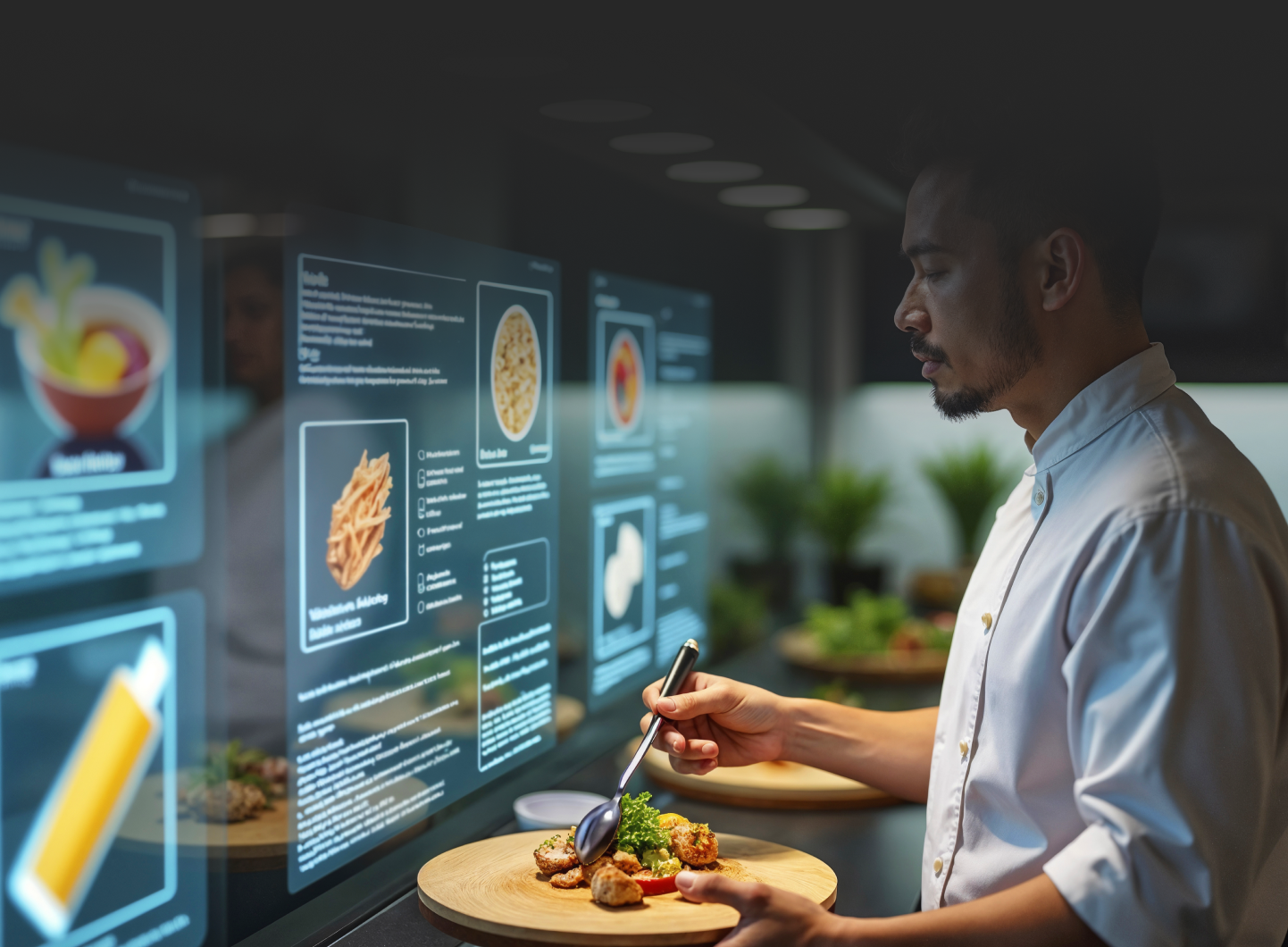I recently stopped for a quick bite after searching for Blue Slushie Modus X Kado Bar, and while waiting for my order, I noticed how the restaurant’s menu was displayed. It was all on a digital screen, personalized with suggestions based on the time of day, past orders, and even mood lighting. This small interaction is just a glimpse of where the food and beverage industry is heading in 2025. From AI-powered menus to sustainable sourcing, there’s a clear shift happening in how we choose and consume food.

AI and automation are now present in everything from kitchen appliances to customer-facing services. At the same time, sustainability is becoming less of a trend and more of a standard. Together, these forces are changing not just the business of food, but how we interact with it daily.
AI-Powered Menus: Personalization and Efficiency
Restaurants, cafes, and even food delivery apps are using AI to provide a tailored food experience. These smart systems take into account a wide range of data—like previous orders, dietary preferences, allergies, and even weather conditions—to suggest the best food options for any moment.
Some of the key ways AI menus are used:
- Dynamic Suggestions: AI tools recommend food based on your eating habits, time of day, or nutritional needs.
- Language Translation: Menus adjust automatically to the reader's preferred language, making it easier for international customers.
- Inventory Management: AI tracks what ingredients are available and updates the menu to reflect real-time supply.
- Reduced Wait Times: Algorithms optimize food prep and delivery timing, improving customer satisfaction.
Fast food chains and high-end restaurants alike are investing in AI tools because they reduce errors, speed up service, and offer a better experience. They also help kitchens manage waste better, since they know what’s likely to be ordered and when.
Sustainable Sourcing & Practices in 2025
Sustainability is more than just a buzzword now—it's a key operating principle. Consumers want to know where their food comes from, how it's made, and what kind of impact it has on the planet. In 2025, the industry is taking big steps to meet those expectations.
Here are a few sustainability efforts gaining traction:
- Local Ingredients: Many restaurants and food businesses now prioritize locally sourced produce, cutting down on transportation emissions.
- Waste Reduction: Kitchens use smart waste tracking to monitor what gets thrown out and adjust portions accordingly.
- Plant-Based Menus: There’s a growing focus on offering plant-based meals that use fewer natural resources.
- Eco-Friendly Packaging: Biodegradable and compostable packaging is more common, reducing the environmental footprint of takeout and delivery.
This focus on sustainability also ties into customer loyalty. Businesses that show Bomb Pop Modus X Kado Bar transparency and eco-awareness are more likely to gain repeat customers in today's conscious marketplace.
Smart Kitchens and Automation
The kitchen itself has evolved in 2025. From fast food chains to home kitchens, smart technology is playing a bigger role. Whether it’s voice-controlled ovens or robotic fryers, the food prep process is becoming faster, cleaner, and more consistent.
Some common smart kitchen trends include:
- Connected Appliances: Fridges that alert you when items are low or expired, and ovens that adjust temperature based on the recipe.
- Robotic Prep Stations: Automated systems that cut, dice, and cook ingredients to perfection.
- IoT Integration: Kitchen devices communicate with each other for seamless workflow and better time management.
- Energy Efficiency: New appliances use less electricity and water, reducing operating costs and environmental impact.
Automation doesn't replace kitchen staff but supports them by handling repetitive tasks and improving safety. This allows chefs and cooks to focus on creativity and presentation.
Health-Conscious Options Become Standard
Another major shift in food and beverage in 2025 is the demand for health-oriented meals. Whether it’s low-carb, high-protein, or allergen-free food, restaurants are offering more choices that align with various health goals and dietary restrictions.
Current popular health-focused trends:
- Functional Foods: Items infused with added vitamins, probiotics, or energy-boosting ingredients.
- Sugar Alternatives: Natural sweeteners like monk fruit and stevia are more common than ever.
- Personalized Nutrition: Some menus even offer items based on your biometric data through connected health apps.
- Smaller Portions: Controlled portion sizes help manage calorie intake without sacrificing taste.
The goal here is not to limit taste but to offer alternatives that promote better well-being. As more people turn to food for preventative health, businesses are responding with smarter menu choices.
Looking Ahead: Connected Experiences
The lines between food, technology, and lifestyle are blurring. In 2025, dining isn’t just about what’s on your plate—it’s about the entire experience. From ordering to eating to sharing the moment online, technology makes it smoother and more engaging.
A few integrated experiences:
- Voice Ordering: Use your smart speaker or phone to place an order while multitasking at home or work.
- AR Menus: Augmented reality displays let you see your food in 3D before ordering.
- Feedback Loops: Real-time feedback through apps helps businesses improve service instantly.
- Social Integration: Menus and offers are now linked to platforms like Instagram and TikTok, where customers can order directly from a food post.
Even vending machines and self-serve kiosks have become smarter. They're connected to networks that monitor stock, adjust pricing, and offer customized promotions based on the user.
As we embrace this new direction in the food and beverage space, convenience, personalization, and sustainability remain the core values. Whether it’s a meal on the go or a sit-down dinner, the entire industry is working to make each experience better, more efficient, and more thoughtful.
Just like how a buy KadoBar online enhances vapor production with consistent flavor, AI-powered menus and smart kitchens are enhancing our food experience with precision and efficiency. It’s about creating a seamless flow from decision to delivery, one meal at a time.
